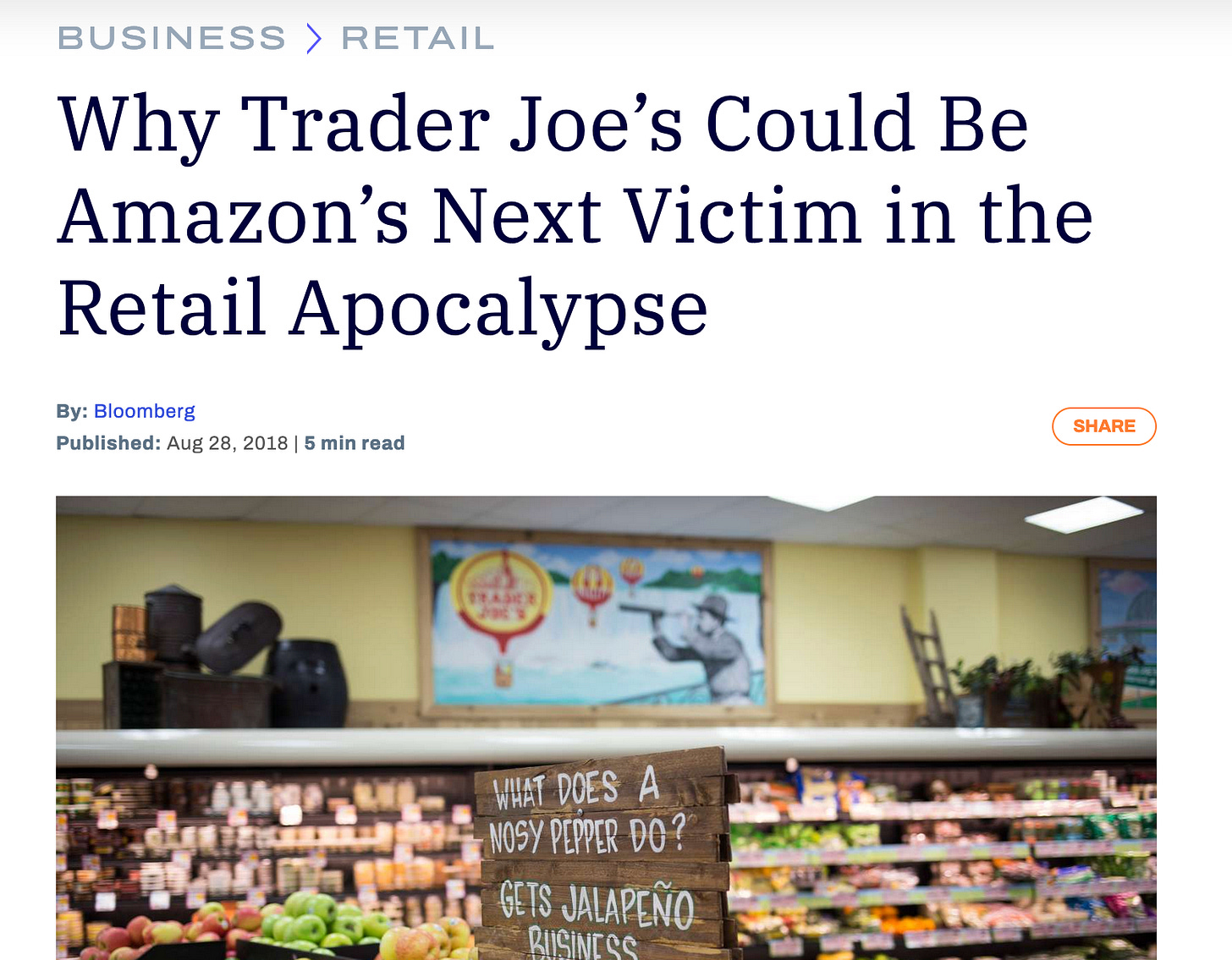Data needs people more than people need data
Back in 2018, alarmist headlines about Amazon’s Whole Foods stealing Trader Joe’s shoppers were everywhere.

It would be logical for retailers in the food space to be nervous. One would expect that having all that data about consumer habits and preferences and access to the most powerful cloud services—including processors designed for AI training— would make Amazon the big winner on physical retail.
Yet, the e-commerce titan has paused new openings of Amazon Fresh and is shutting down its clothing stores. Jason Del Rey, who was on the Six Pixels of Separation podcast to talk about his new book on the rivalry between Amazon and Walmart, points out that years after the acquisition, Amazon is still figuring out how to leverage Whole Foods. “It’s a fine business, but it’s been underwhelming to me.”
Amazon should be an inspiration for companies still using “we need more data” as an excuse for inaction. Should we try to use the best data possible to increase our decision-yield? Absolutely. However, as a data science consultant, I’ve been to all kinds of organizations (including big retailers) where the following sins continue to be repeated over and over:
Treating quantitative data as a panacea the detriment of opportunities that can only be exploited if we go past the usual assumptions and conventional thinking.
It’s true that the right data can lower risks and improve decision-making. However, many companies that proudly declare to be “data-driven” tend to forget that their customers and employees are people.
The title of this post was inspired by this 2019 article by Alasdair Rae. UK-based Rae partnered with American scholar Garrett Nelson to write a paper on the “economic geography of the United States” based on open data. The paper ended up being useful for people on a multitude of fields, from epidemiology to renewable energy.
Rae writes,
Why do I think this story demonstrates that data needs people more than people need data? The first reason is that this wasn’t new data. It just needed people with the inclination and time to make it useful. The fact that it was open data wasn’t enough. The second reason is that it needed human input to make it appealing and accessible. A third reason is that it demonstrates how it needed human interaction to take it beyond the realm of data into information and knowledge. The knowledge came about through human interaction.
In the same podcast mentioned above, Jason Del Rey and Mitch Joel talk about the growth of Trader Joe’s (American chain of grocery stores).
Like me, both are Trade Joe’s shoppers, with Mitch having to cross the border from Canada to buy there. The retailer’s success is a great example of how “experience can still matter”, as Jason explains:
I walk into a Trader Joe’s in Clifton, New Jersey, and I’m going to like all the people that are working there, and they’re going to seem at least that they care about my day, and that I’m having a good experience. There’s obviously a need in the country and in the world for retailers that focus exclusively on getting you the price you need to afford to shop, but darn, it’s cool to go into a physical store and have someone actually care about how you’re gonna feel walking out thirty minutes later.
We can add all the data and technology in the world to a business, but in the end it’s people who build things that create connection and value that just isn’t possible when we try to optimize output at the expense of our humanity.
Instead of obsessing over perfect data to help you sell more average stuff to more average people, consider an alternative: leveraging human curiosity and creativity to build interesting and memorable experiences, magical products and services, or even just displays of generosity and delight.



